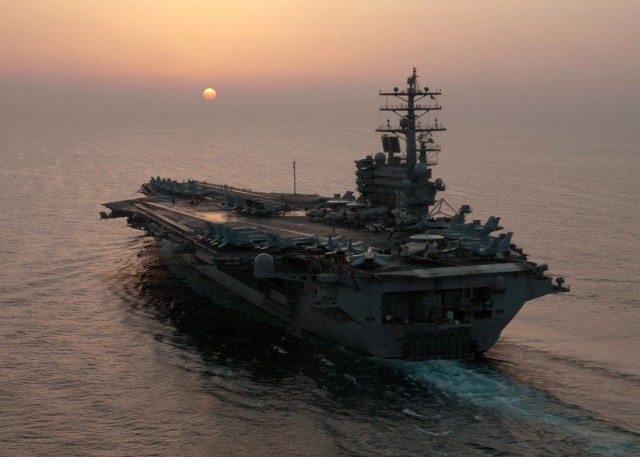The US Navy views the Asia-Pacific region as a top strategic priority even as it faces possible budget cuts that could curtail other global missions, the naval chief said Wednesday.
With China’s clout rising and its military might expanding, President Barack Obama’s deputies and military commanders increasingly portray Asia as a key to American national security.
The new chief of naval operations, Admiral Jonathan Greenert, echoed that view and suggested growing pressure on the US defense budget would not derail plans to focus on the Pacific region.
“Asia will be clearly a priority and we will adjust our operations accordingly,” Greenert told reporters in a teleconference.
The Navy now constantly maintains an aircraft carrier — the USS George Washington — in the Pacific, compared to 10 years ago when a carrier was available only 70 percent of the time, he said.
US officials have vowed to expand the American naval presence in Southeast Asia and to uphold “freedom of navigation” in the South China Sea, despite China’s territorial claims in the area.
Apart from Asia, the Navy also needs to ensure a presence around the world but budget pressures will require having to make “trade-offs” when it comes to operations and joint exercises with partners, the admiral said.
“If you’re not in some areas of the world at all, then things can fester there and become a bigger problem later,” he said.
“The trade-offs become how we distribute our Navy around the world both from the perspective of security operations and also exercises with allies,” he said.
With the Pentagon preparing to cut $450 billion over the next decade, the Navy will have to find “innovative ways” to maintain its commitments partly by stationing ships and crews in ports closer to strategic “choke points,” he said.
Greenert cited a new agreement to station four US destroyers in the Spanish port of Rota for NATO’s new missile defense system as an example of more efficient “forward” deployments, which are designed to save time, fuel and personnel costs.
But compared to 10 years ago, the Navy has fewer ships and personnel at its disposal even as the pace of operations has accelerated, Greenert said.
In 2001, the Navy had 320 ships in its fleet compared to 284 vessels now, and had 375,000 personnel compared to the current force of 325,000, according to the Navy.
The pace of operations has increased in the past decade due to the new missile defense mission using Aegis ships, counter-piracy and counter-proliferation efforts and a decision to keep two aircraft carrier groups in the Arabian Sea at all times as well as amphibious ship groups, according to Greenert.
US officials have yet to make a decision about whether to withdraw one of the aircraft carriers in coming years once American forces are withdrawn from Afghanistan as planned by 2015, he said.
Some analysts, including retired army general David Barno, a fellow at the Center for a New American Security, have raised the possibility of cutting one of the country’s 11 aircraft carriers to absorb budget cutbacks.
“Everything is on the table,” Greenert said when asked about cutting carriers or aircraft.
He described budget discussions as “a clear-eyed, open look at the future at what the nation needs.”
Greenert, who took over as naval chief last month, spoke to reporters from Newport, Rhode Island, where he addressed an international conference on sea power.










